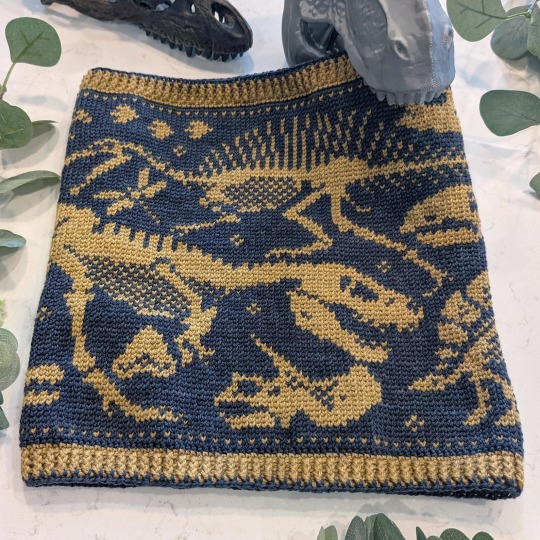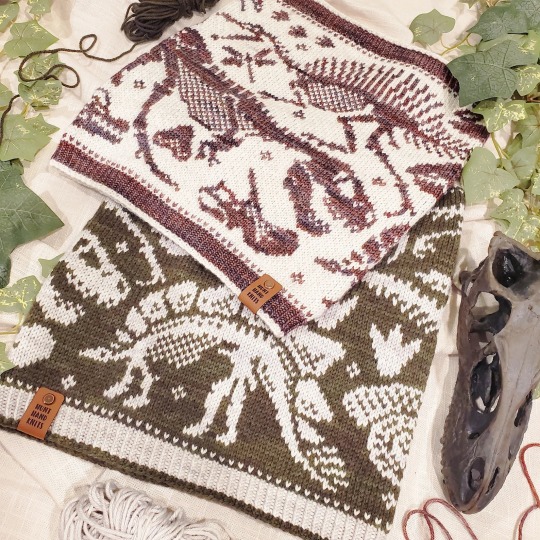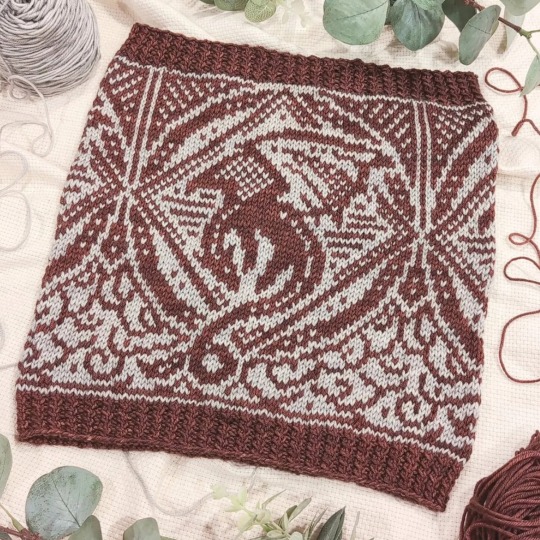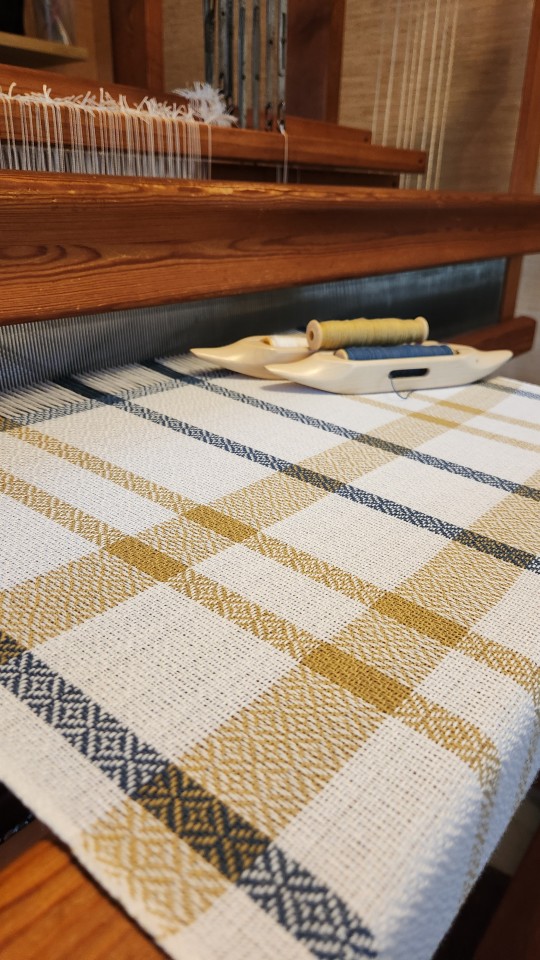Text
🧶 Cow hitch increase
Unlike all other single-stitch increases I know, this one is perfectly symmetrical. I’ve been seeing it a lot in my feed lately, so I thought I’d share it. Haven’t tried it yet in a project though.
It mimics the structure of a cow hitch knot - hence the name.
🎥 🧶 👀✨
2K notes
·
View notes
Text
Jeny’s interlock cast off
Which is my preferred stretchy cast off for ribbing?
I often end up doing Jeny’s interlock: It’s stretchy and matches the long-tail cast on pretty well.
🎥🧶
135 notes
·
View notes
Text
Jogless stripes in the round
Knit to the last stitch of the round and make a yo with the new colour bringing it up from behind the working yarn. Knit the last stitch with the old colour.
Knit the new round with the new colour without twisting the yarns.
When you get to the last stitch, knit it together with the yarn over.
This technique is demonstrated on the sleeves of the StripesNCotton Cardigan. Pattern available on Ravelry.
16 notes
·
View notes
Text
Stretchy k2tog tbl cast off
Garter stitch is normally slightly looser in gauge than stocking stitch. This also means that the regular cast off will turn out too tight on e.g. a garter stitch shawl.
One solution is to go up a couple of needle sizes.
A better solution is the cast off shown in the video: Knit 2 stitches, insert the left needle through both of them and knit them together through the back loop.
81 notes
·
View notes
Text
Embroidery is another option for embellishing your knits. You can use any type of stitch. One type of stitch, however, is peculiar to knitting: the duplicate stitch, which mimics the knit stitch.
To embroider a stitch, bring up the tapestry needle from the back at the base of the stitch you want to cover. Then follow the path of the stitch and bring the needle down again through the same hole. Bring the needle up again at the base of the next stitch you want to cover. Try to cover the original stitch as much as possible.
Work in one direction and when you get to the end of a row of duplicate stitches, turn your project upside down to work the next row in the opposite direction.
108 notes
·
View notes
Text
Catching floats: catching the non-dominant yarn
Catching the non-dominant yarn is slightly more complicated than catching the yarn to the left. Once you get it though, it’s not so hard and you can do it in one fluid movement.
165 notes
·
View notes
Text



Dinosaur and Dragon Cowl Patterns // Hunt Hand Knits
979 notes
·
View notes
Text
Changing colour
You may have seen that I join skeins by sewing one yarn end into the other, but that method obviously doesn’t work when changing colours.
This is what I do, if I have a colour change at the beginning of a row.
If the colour change is in the middle of a row or if I’m knitting in the round, I weave in the end the usual way, since this method would “close” the first stitch and it wouldn’t look neat.
And, I am often asked, doesn’t that extra thickness show, when you sew the end into the yarn? It depends on the yarn and on how well you tapered the ends beforehand.
45 notes
·
View notes
Text

Pro tip: if you knit almost exclusively at night, your yarn will look extra beautiful the first time you see it in the light
438 notes
·
View notes
Text
I was asked for a slower video showing how I crochet the sleeve to the bodice.
A crochet join has the advantage that it’s stretchy, easy to make and easy to undo, if you need to redo a section.
It’s a sturdy seam, which I like, because it gives a tailored jacket-like look to a set-in sleeve.
107 notes
·
View notes
Text


Mitts knit back and forth in a circle. Sometimes I'm amazed by knitting designers and how their brains work.
Pattern is Xmas star mitts.
1K notes
·
View notes
Text
Pinhole cast on
The pinhole cast on allows you to start knitting in the round from the centre outwards without getting a hole in the middle.
2K notes
·
View notes
Text

"Time flies when you're having fun."
That's what we're always told, but you never really realize it until the moment passes. One minute you're having a good time chatting with friends, the next you realize it's almost time to go. As I wrap up my second-to-last weekend at the Octagon House, the realization hit me like a tidal wave. I'm halfway through the first towel now, but my time is quickly coming to a close.
But just as our time together is temporary, so is our time apart.
I cannot wait to return for winter break.
42 notes
·
View notes
Text
When knitting stripes, you get a jog at the beginning of the round. When carrying the yarn from one stripe to the next, I used to just twist the yarns anticlockwise. That way, when stretched, the yarns would pull in opposite directions evening out the jog.
But very recently, I discovered the most convincing method by far: Knit until the last stitch of the last row in the old colour. Make a yarn over with the new colour, making sure it lies behind your working yarn, knit the last stitch in the old colour.
Knit the first round with the new colour. Knit the last stitch of this first round together with the yarn over
98 notes
·
View notes
Text
To get a clean fold when making a 1/1 rib folded neck or cuff, you work a double knitting round, i.e. slip the purl stitches with the yarn in front and knit the knit stitches.
33 notes
·
View notes

